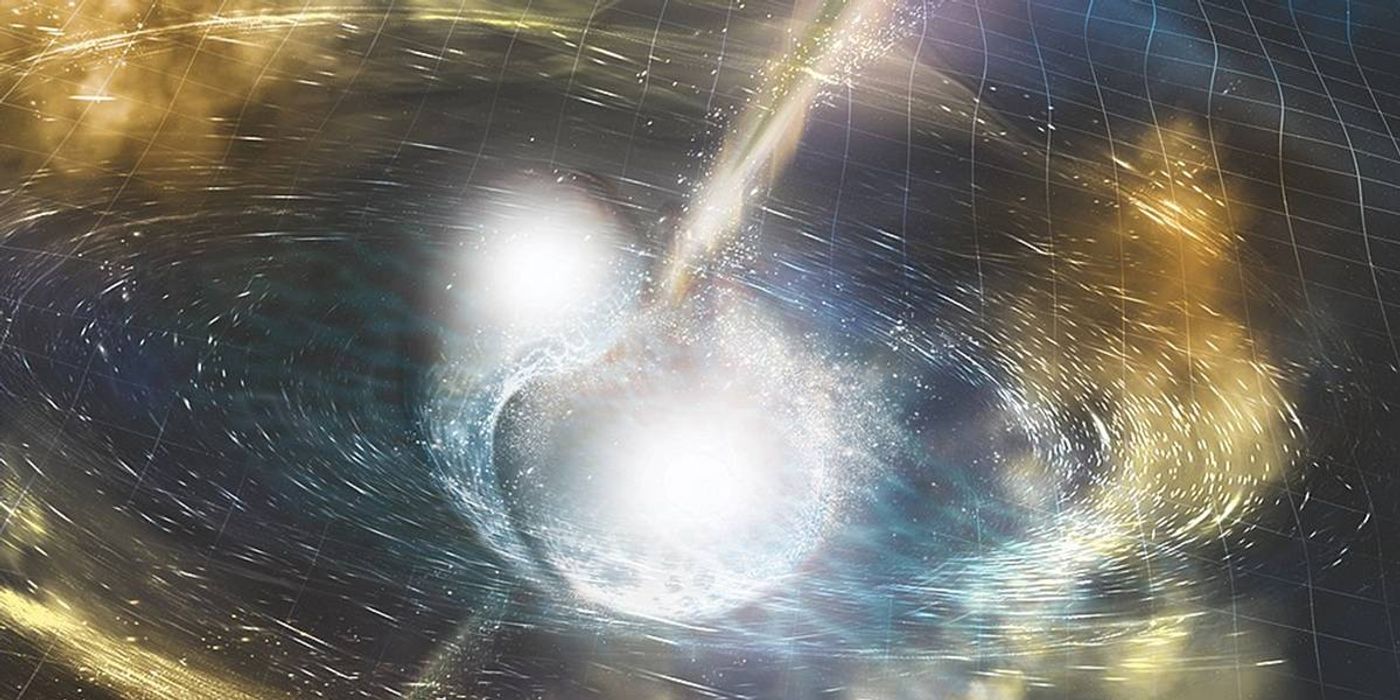Neutron Star Merger Fused Atomic Nuclei, Spilled Out Heavy Element
It is safe to say that we live in a world of hydrogen and helium, the lightest elements in the periodic table. Born minutes after the Big Bang, the two make up close to 99% of the ordinary matter in our universe. But to figure out where the rest heavier elements come from is anything but a simple task.
In a recently published study, an international team of astronomers reported that they discovered a humongous source of strontium (Sr), a metallic element, in a distant galaxy millions of year-lights away. The element was produced through an out-of-the-world explosive event: the collision of two neutron stars.
Strontium, an alkaline earth metal, is the 38th element in the periodic table. It is soft and silver-white color in its pure form, and its presence is abundant in Earth's crust.
The mining and use of strontium peaked during the 1980s when the cathode-ray tube (CRT) was popularly used as the display for TVs. Strontium was incorporated into the glass component of the CRT to curb X-ray emission. This application for strontium has since decreased substantially because energy-efficient display methods such as the liquid-crystal display (LCD) were developed and commercialized.
But many radioactive forms of the element are still popularly used these days. For example, Sr-89 is a radiopharmaceutical that's used to treat bone pain and metastatic bone cancer. Sr-90 can be used to fuel radioisotope thermoelectric generators (RTG), providing electricity for remote worksites and spacecrafts.
All atoms are created in a nuclear physical process called nucleosynthesis, during which nucleons — protons and neutrons — are squished together to generate new nucleis. Hydrogen and helium isotopes were produced through Big Bang nucleosynthesis. The fusion that happens in the cores of stars such as the Sun leads to stellar nucleosynthesis. This reaction allows for slow neutron capture process (or s-process), which is intense enough to create light elements, up to iron and nickel.
Scientists have long suspected that the rapid neutron flux (or "r-process") is required to produce heavier elements. But they have no clue (or evidence) where a r-process can happen.
Then came the gravitational wave observation event GW170817. It was the result of two neutron star merging with each other, which mashes a large amount of neutron-rich matter. Very heavy atoms should have formed during the collision and were likely to get ejected explosively toward the nearby space.
Neutron Star Merger Gravitational Waves and Gamma Rays (Veritasium)
The astronomical phenomenon in 2017 originated from the shell elliptical galaxy NGC 4993. Right after this merger, seventy observatories on Earth and in space tuned in and scanned the locale of the event for signals across the electromagnetic spectrum.
The recorded transient signals AT2017gfo ignited the hope in astronomers because they were broadly consistent with an outflow of heavy elements. But further identification and confirmation is needed to support their hunch. Led by Darach Watson at the Niels Bohr Institute in Copenhagen, the international team combed through and re-analyzed the spectroscopic data captured by the Very Large Telescope (VLT) in Chile.
Their analysis did identify the signal of strontium, which has a signature spectroscopic feature at wavelength of 810 nm. This discovery provides strong evidence that neutron-star mergers are responsible for producing strontium and other heavy elements.
This research was published in the journal Nature.
Source: Physics World









